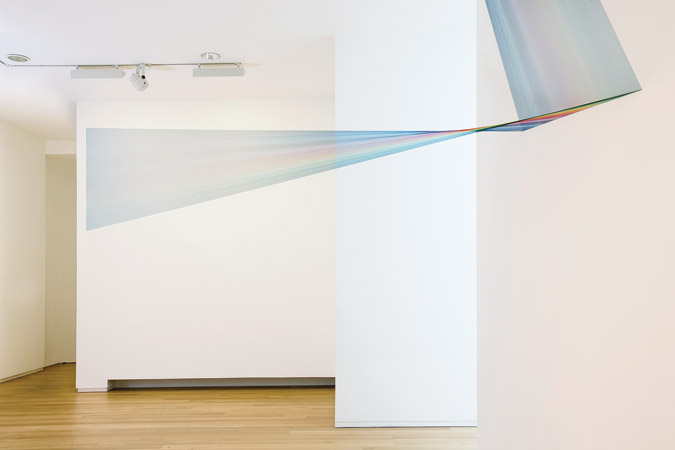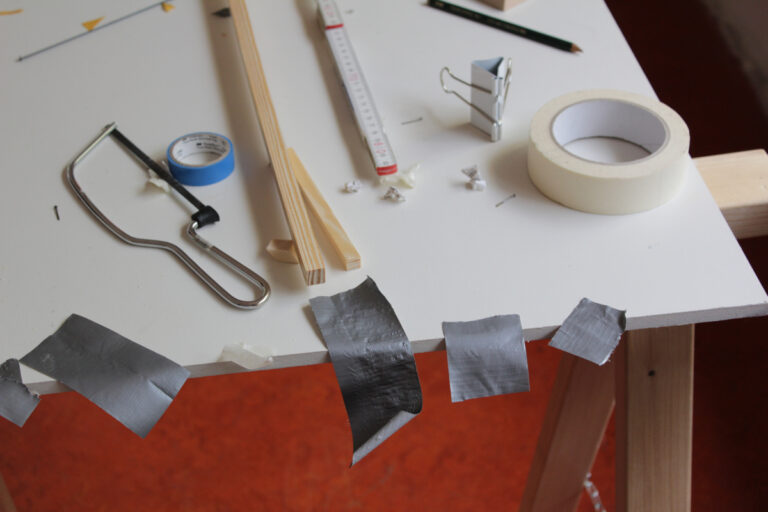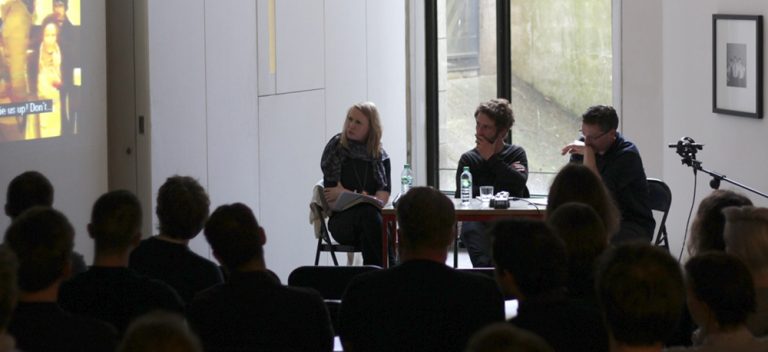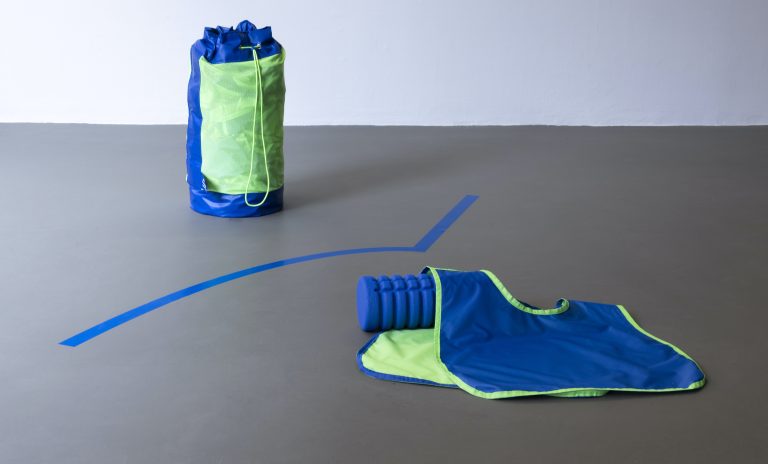With recent exhibitions by Mark Swords at the Kevin Kavanagh Gallery, and Kathy Prendergast and Isabel Nolan at the Kerlin Gallery, there has been a strong suggestion of a shift toward the crafts in contemporary Irish art practices. Previously at the Kerlin, Nolan exhibited a number of very attractive pieces of needle and thread work in what otherwise seemed a physically cluttered exhibition.
Another Place is Mark Garry’s first solo show at the Kerlin Gallery which combines a spare and delicate mixture of drawing, print, sculpture and installation. The work focuses on the intimate connection between hand and head, exploring the grounding of skill in physical practice. It attempts to create a dialogue between the physical practices and thinking.
I Once Went There comprises of three small pieces of black, mesh sandpaper, hung from pins; each sheet of mesh slightly askew from the one beneath. These see-through grids don’t quite line up, there is a disruption of stasis or the start of a rotation being suggested here. It looks like the visualisation of a point from the Tractatus.[1]
Beside it, To Say a Psalm For stands proud of the gallery wall. It is a small black-stemmed bonsai “palm tree” with lurid yellow feathers as fronds.
In the middle of the gallery sits a multi-coloured Indian rope trick. On the floor a decreasing spiral of coloured, concentric circles – which are made of threaded beads – reaches up and disappears into the ceiling. The ‘rope’ is a banded spectrum of colour, which reveals a craft and meticulousness that is repeated throughout this exhibition.
They investigates tacit and haptic processes of learning, rhythms of biological life, rhythms of problem solving, of practice, of repetition; an opening up of the imaginative possibilities of things occurring again and again.
Blue Eyed Grass 2,3,4 represent perhaps the most recognisably new element to Garry’s work. They are large flowers carved from untreated American basswood. The natural rhythm of a flourishing flower is halted and presented. The sculptures bloom from the side of the gallery wall and are not dissimilar to Yoshihiro Suda’s work. Where in the other pieces the frequencies of colour are brought to the fore of Garry’s dialogue, here, with the un-painted flowers, the frequency of a slower, seasonal, natural occurrence is illustrated. It brings with it a change of pace to the work.
Folds is a breathtaking installation piece comprised of suspended lines of thread. It soars. And yet, it barely exists. It looks as if a wave of light has been refracted and is bouncing around inside a prism. It can be viewed from an infinite number of positions, each time giving the viewer a new geometry. The threads – which are ordered one next to the other, and form a plane of subtly changing colour – twist, arc and swoop over the far end of the gallery space in a most lucid manner. The colours of the thread are spectral and when these thread routes overlap, there is a build up of tone that is mesmeric.
Of Nature’s Elements is a set of coloured photo etchings depicting a wheeling tornado. The 18 etchings are framed and hung in an ordered manner on the gallery wall. There is a useful counter point in language and concept with this particular piece.
The press release finally states that “this new collection dramatically transforms this space” – and it does – using utilitarian and very basic materials. The wit, coherence, rigour and beauty of this exhibition is evident and satisfying. It is an exhibition that warrants several viewings.
Notes
[1] Tractatus Logico-Philisophicus, Ludwig Wittgenstein, 1921. 2.0271- Objects are what is unalterable and subsistent; their configuration is what is changing and unstable.
Adrian Duncan is an artist who lives and works in Dublin.




